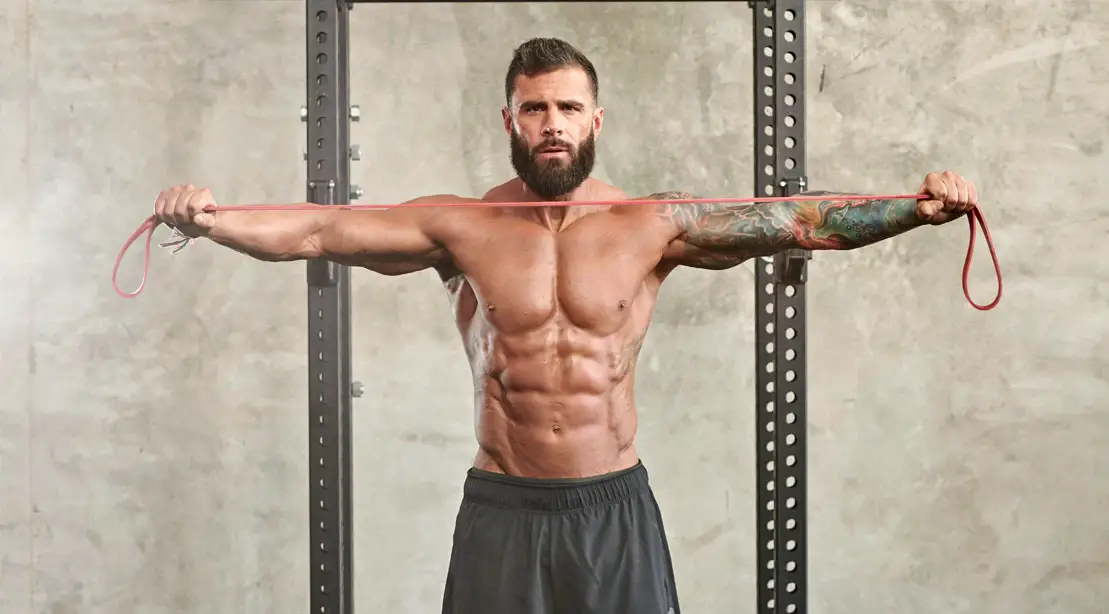The New Truths for Hypertrophy Training
As a fitness expert, dealing with a wide variety of clients come a million types of fitness goals. Hypertrophy training, known for its effectiveness in increasing muscle mass, has gained significant attention not only among athletes but also within the general fitness community.
However, throw out that term—”hypertrophy training”—to someone new in their fitness journey and be prepared for an even wider mix of reactions: from confusion to shock to even dismissal, usually with a common follow-up of: “I don’t want to look like a bodybuilder. I just want to tone up.”
So how do you explain then, that despite its intimidatingly scientific-sounding name, hypertrophy training is an element that every person—from beginner to elite athlete to aging retiree—can benefit from, if done correctly.
Here, we’ll delve into how hypertrophy training can enhance your health and fitness, address safety concerns, and explore its applicability across various populations.
What is Hypertrophy?
By definition, “hypertrophy” is the increase in the volume of an organ or tissue due to the enlargement of its component cells—emphasis being “enlargement.”
When you hear a bodybuilder or fitness expert talk about “hypertrophy training,” the individual is usually discussing working on the enlargement of muscle cells. For the laymen, and purpose of this article, we will just call it “hypertrophy.”
However, what first needs to be understood is that in order to actually make this muscle growth happen we have to first apply the proper stimulus. This stimulus can change over time, but there are some basics that most fitness educators and those in the academic community have generally agreed have to be followed in order for hypertrophy to occur:
- Sets of anywhere from five to 30 reps will likely grow lots of muscle.
- Achieving hypertrophy works best when you train close to failure. Anywhere from 4 reps in the tank and below can provide a good stimulus for muscle growth.”
If you’re looking for more nuance, we can say that generally a set that has a decent amount of time under tension—but not too much—and is taken relatively close to failure will produce a good stimulus for muscle growth. As you become more advanced that becomes a bit trickier, but these rules will get you through most of your training journey (especially if your main goal is simply to look good naked).

The Health and Fitness Benefits of Hypertrophy Training
Hypertrophy training involves exercises that are designed to stimulate muscle growth. This is achieved through resistance training that challenges your muscles, which will lead to increases in muscle fiber size. The benefits of this type of training extend beyond just aesthetic improvements; they include enhanced metabolic rate (via the increased muscle size), improved muscle strength and endurance, better joint health (especially while training through larger ranges of motion), and increased bone density.
These physiological adaptations can contribute to a healthier, more functional body capable of more efficient fat burning and reduced risk of chronic diseases.
Beyond Bodybuilding: Hypertrophy Training for the Average Joe
The misconception that hypertrophy training is solely for those aspiring to become bodybuilders is widespread. However, the core benefits of increased muscle mass and strength are vital for everyday activities and overall health.
Most of the studies looking at all-cause mortality point toward higher amounts of muscle mass being one of the most important things you can do to prevent disease and early death, men and women alike. Improved muscle and strength enhances functional abilities, such as lifting groceries or climbing stairs, making daily tasks easier and reducing the risk of falls and injuries. Moreover, muscle is metabolically active tissue that helps in managing weight and combating metabolic diseases.
(Did I mention this is the best style of training in order to look good without clothes on? I think that’s something we all can all get behind.)

The Myth of Getting TOO BIG
A common myth about hypertrophy training is that it’s exclusively for those aiming to bulk up to bodybuilder proportions. However, the fear of becoming “too big” from engaging in this type of training is unfounded for most people.
In reality, achieving the level of muscle mass seen in professional bodybuilding competitions like Mr. Olympia often involves factors beyond just training, including the use of performance-enhancing drugs (PEDs) and specific genetic predispositions.
For a more accurate perspective on what natural muscle development through dedicated hypertrophy training looks like, consider observing a natural bodybuilding competition. Pay attention to categories such as the bikini division for women and the men’s physique division.
These athletes represent the pinnacle of what’s achievable through natural hypertrophy training, dedicating years of their lives without the aid of PEDs. This level of development is both aesthetic and attainable, illustrating that hypertrophy training enhances physique in a balanced, healthy manner without the risk of “getting too big” for the vast majority.
It is likely not in the cards for anyone reading this article to get TOO BIG without really trying to get too big. And if you do wake up one day feeling like you’re a bit too muscular for your liking, guess what? It is very easy to reduce your weekly training schedule, or include some longer-form cardio (like biking) for a little bit of muscle loss, and continue on your path for health and wellness with a balanced physique that you enjoy!
Safety in Hypertrophy Training
Safety is a valid concern for anyone considering a new form of exercise. Like any other type of training, hypertrophy training carries risks if performed improperly. However, when exercises are executed with the appropriate technique, appropriate weight, and in a well-structured program, the risk of injury can be minimized.
It’s crucial for beginners to seek guidance from qualified professionals to ensure exercises are done safely and effectively. The fear of “popping a hamstring” can largely be mitigated by starting slowly, increasing intensity gradually, and making sure you’re not overdoing it.
Luckily for you (insert shameless plug here), the team we have over at RP Strength has actually developed an app that includes instructional video techniques and asks you for your bio feedback during your session in order to gauge the appropriate volume adjustments for your next session and the session for the following.
To put it simply, the RP Strength app is a literal coach in your pocket that helps you stay safe, train properly, and keeps you on track for growing the most amount of muscle possible.

The Importance of Tracking Progress
Marking your numbers, or tracking your progress, plays a critical role in hypertrophy training. Monitoring improvements in the weights you lift, the repetitions you perform, and your overall performance over time can provide valuable feedback, enhance motivation, and inform necessary adjustments to your training regimen. While dedicated apps, as I spoke of above, can simplify this process, even traditional pen and paper methods like journaling can be effective. Tracking progress ensures that you are consistently challenging your muscles, which again, is a key component for stimulating growth.
Accessibility for All Ages and Fitness Levels
Hypertrophy training is not exclusively for young, athletic individuals or those training to enter a bodybuilding competition. People of all ages, including those who are older or have conditions like arthritis, can benefit from a tailored hypertrophy program.
Modifications and low-impact variations of exercises can make hypertrophy training accessible and beneficial, even for those who weigh 105 pounds, are 77 years old, or have other health considerations. It’s about adapting the principles of hypertrophy to suit individual capabilities and limitations, emphasizing the importance of a personalized approach. If you are an older individual and you are planning on getting into training for the first time in your life, then hiring a professional such as a personal trainer might be a great idea. They can guide you in the right direction and help you perform exercises properly that you might otherwise not have tried; like barbell squatting for example, which is completely safe for someone who is older as long as it is performed properly.
So, what have we learned? Hypertrophy training offers a spectrum of health and fitness benefits that extend to individuals of all ages and fitness levels. By focusing on safety, personalized programming, and consistent progress tracking, anyone can incorporate hypertrophy training into their lifestyle to improve their health, functionality, and quality of life. It’s not just about building muscle; it’s about building a healthier, more capable (and better naked-looking) you.
IFBB Pro Jared Feather has an MS in exercise physiology from the University of Central Missouri and has over 10 years of experience in coaching and contest preparation. Feather is also a contest prep specialist for RP Strength.
You can find Jared Feather and RP Strength on social media:
Jared Feather: @jared_feather
RP Strength: @rpstrength


